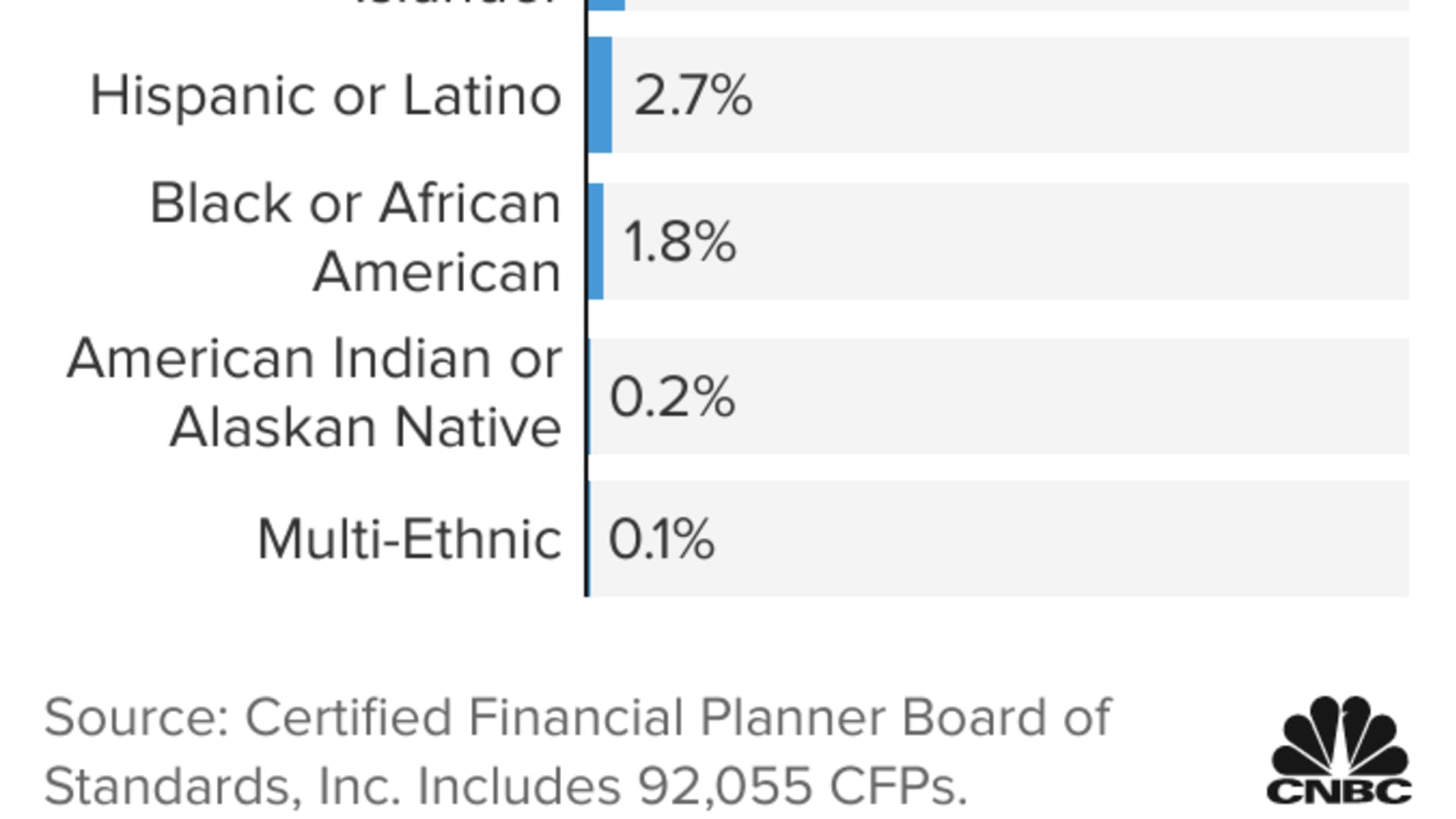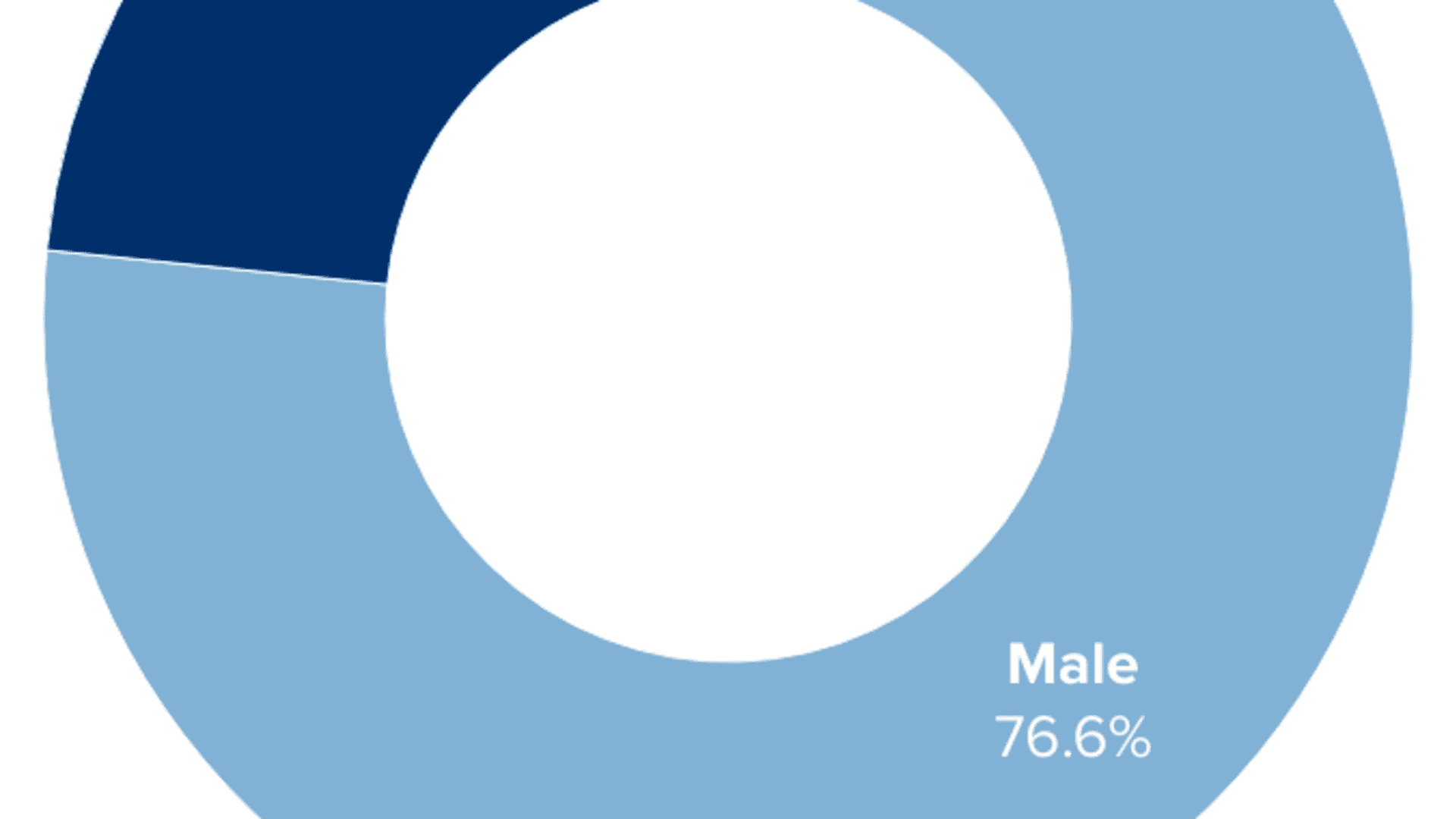
- The number of Black certified financial planners grew by more than 10% in 2021 from 2020, according to the CFP Board. The growth rate was 15% and 4.2% for Hispanic and female CFPs, respectively.
- However, the industry remains overwhelmingly white and male.
- Boosting diversity is important for the profession and for prospective clients.
Diversity among financial planners improved in 2021 though the industry remains one that leans heavily toward white men, according to statistics issued Wednesday by the Certified Financial Planner Board of Standards.
The group, which issues the certified financial planner designation, saw a pronounced uptick in female, Black and Hispanic practitioners last year. The number of Black financial planners grew by more than 10% from 2020; the growth rate was 15% for Hispanic CFPs and 4.2% for women.
More from Personal Finance:
Watchdog signals broad crackdown on hidden fees at banks
Millions still waiting on last year's tax refund
SEC chair eyes tougher cyber rules to protect against hacks
Feeling out of the loop? We'll catch you up on the Chicago news you need to know. Sign up for the weekly Chicago Catch-Up newsletter here.
All exceeded the growth rate of CFPs overall, which hit an all-time high of 92,055, an increase of 3.8% from 2020.
"2021 is the largest and most diverse class in the CFP Board's history," according to Kamila Elliott, chair of the group's board of directors.
Despite last year's improvements, officials recognize that the current metrics still fall short.

There were 76,435 white financial planners in 2021, about 83% of the total — dwarfing the other racial and ethnic groups.
Money Report
About 4%, or just over 3,600, of CFPs are Asian or Pacific Islanders; almost 3% (about 2,500) are Hispanic or Latino, and over 1,600 (nearly 2%) are Black or African American.
By comparison, the U.S. population is about 76% white, 19% Hispanic or Latino, 13% Black or African American, and 6% Asian, according to Census Bureau data.

Meanwhile, almost 77% of CFPs are male and 23% are female, according to the CFP Board. (Females make up about 51% of the overall U.S. population.)
"Our goal is that the number of CFP professionals represent the demographics of the U.S.," said Elliott, who in 2022 became the first African American to serve as the CFP Board's chair. "I'd love a day when we see 13% of CFP professionals be Black, and 19% be Hispanic."

Diversity among financial planners isn't just important for the industry, but also for the broader American population — it may encourage more minority households to seek financial advice if that advice is more readily available from someone who looks like them, Elliott said.
The CFP Board has tried raising awareness and availability of the financial-planning profession, via scholarships for preparation courses for individuals taking the CFP exam, as well as encouraging mentorship and internship programs among advisors, and hosting an annual diversity summit, for example, officials said.






